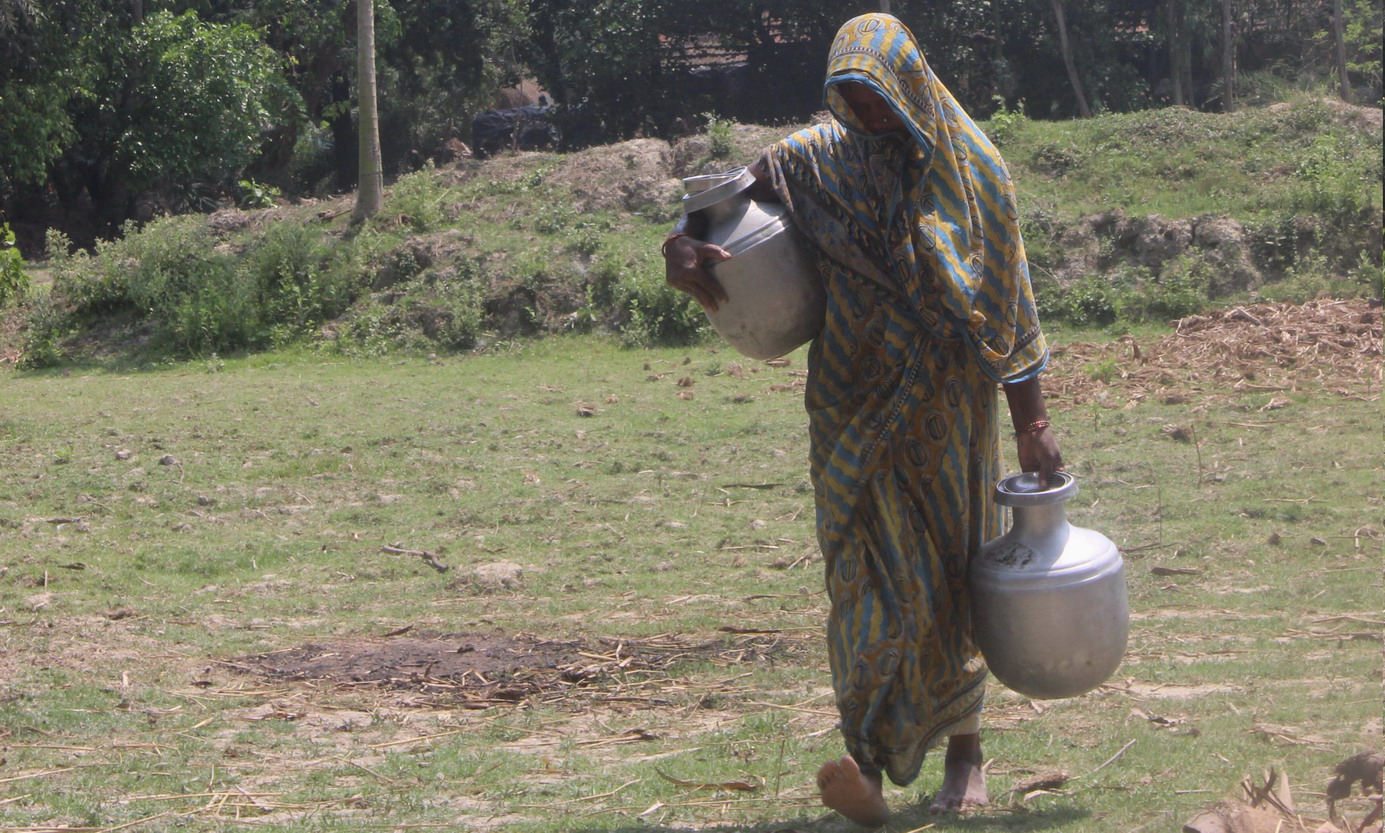
By Shibaji Bose, Independent Research Consultant; and Madhubanti Talukdar, Independent Researcher, India
The climate-affected and vulnerable communities inhabiting the Sundarbans, who have been battling the persistent perils of the accelerating climate crisis in the form of recurring floods, tidal surges, cyclones, and storms, now face a new challenge in the form of extreme heat. The present piece is informed by findings from a study on climate loss and damage in the Sundarbans, conducted using a participatory and collective visual method called photovoice, which allowed us to look at heat, and the everyday experience of living with it, through the lens of communities themselves.
Photovoice involves asking selected participants within a community to take photographs on particular themes, after which they explain why they took these photos, and collectively develop an accompanying narrative for them (Wang & Burris, 1997). In our study, the photographs and narratives developed by community members from a village in G-Plot of the Indian Sundarbans pointed to their increasing precarity in the face of extreme levels of heat, an unprecedented hazard that they are not used to coping with, one that has pushed their lives and livelihoods into increased uncertainty. Although using visual methods like photovoice in social science research can yield insights that are otherwise difficult to obtain, in this context, the groups involved repeatedly communicated the challenges of capturing or communicating the experiences of extreme heat through photos.
The study participants were divided into two groups consisting of men and women. They were selected from various sub-communities based on factors such as caste, ethnicity, religion, economic status, and geographical location to ensure that all segments of the diverse population were adequately represented. The women group’s photos and narratives highlighted the difficulty of accessing clean drinking water during the hot summer months, who stated, “Most tube-wells and taps in this region don’t work. The ones that do had dried up, and it took us thrice the amount of time to get water. There used be long queues at the taps every day. Sometimes fights would break out. It was physically draining, in that heat.” The men’s group, on the other hand, focused on the difficulty of carrying on with traditional occupations like agriculture, fishing, and manual labour that involves spending long hours outside. When the findings were presented at a community meeting, a rural medical practitioner from the island reported that he had treated several cases of heatstroke, dehydration and diarrhoea in the region during the unforgiving summer.
These findings substantiate what we already know about rising temperatures in the Sundarbans. In 2024, which saw massive heatwaves across South Asia, the region was ravaged by high wet-bulb temperatures (a deadly combination of high heat and excessively high humidity levels), acute scarcity of drinking water, a variety of heat-related ailments, and even wildfires in its Bangladeshi part. Further, the combination of high atmospheric and surface water temperature has led to an increase in the sea level – a matter of grave concern for the ecologically rich region with its diverse wildlife, marine habitats, and impoverished populations. The lived experiences of communities in the Sundarbans exemplify how these cascading uncertainties result in the further disempowerment of an already vulnerable population. g
References: Wang, C & Burris, M.A. (1997). Photovoice: Concept, Methodology, and Use for Participatory Needs Assessment. Health Education & Behavior, 24, 369 – 387.
Photo caption: A woman islander carrying drinking water from a neighbourhood village as some tubewells tend to dry up during the summer months. Photo credit: Shibaji Bose.
Disclaimer: The views expressed in this piece are those of the author/s and do not necessarily reflect the views or policies of AIDMI.